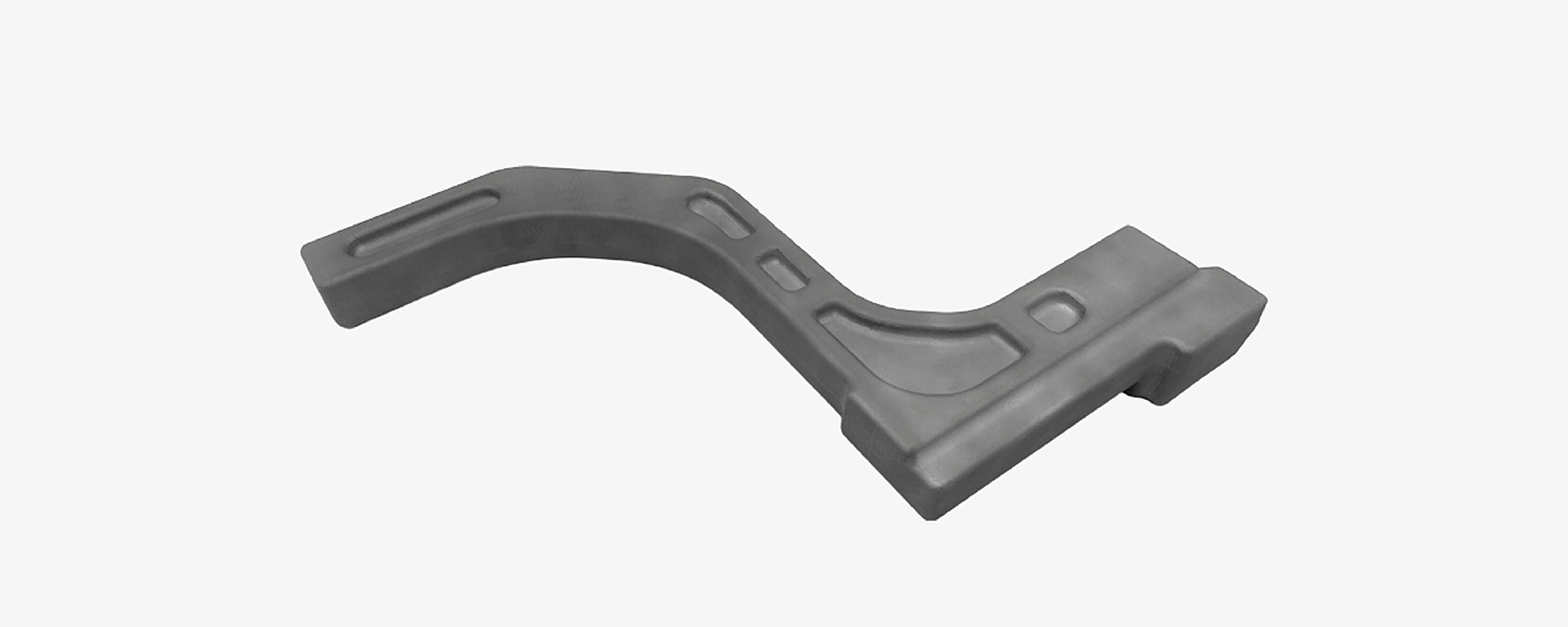Safety First – Forged Structural Elements for Battery Housings
Lightweight, functionally designed components reduce the total weight of a battery-electric vehicle and thus its energy consumption. With ideas for forged lightweight components made of aluminum or steel, the Hirschvogel Group ensures that weight savings do not come at the expense of safety. Innovative structural elements for battery housings are one example.
The heart of an electric vehicle is the battery storage unit. It consists of an upper housing, the battery modules, the cell management controller, the high-voltage connector, the multipoint connectors, the battery management system, and the base plate with the cooling system and underbody protection. These elements are enclosed by a side housing. This provides stability, supports thermal management, and protects against environmental influences such as mechanical impacts, therefore playing a central role in crash safety.
In-built impact protection
In terms of possible accident scenarios, side pole impact is one of the most severe stress cases for the battery storage unit. According to publications by a large number of automotive manufacturers, this is therefore a decisive factor in the design of the battery storage system. According to the “Euro NCAP Protocol – Crash Protection – Side Impact 2026,” the side pole impact safety test involves a battery-electric vehicle hitting a defined pole at 32 km/h and a transverse angle of 75°. The energy generated by the impact must be absorbed by the vehicle body and the battery housing connected to it. In order for the vehicle body and battery housing to act as a functional unit in which the energy to be absorbed is optimally distributed, both must be designed in a coordinated way. With regard to weight, it is important to avoid structural redundancies.
High-quality material alternatives
Since the battery housing is one of the crash-relevant vehicle structures, the use of forged components made of aluminum or steel is advantageous. Compared to cast components, they offer higher strength and ductility. Due to their high deformability before fracture, they contribute to the protection of the battery storage unit and thus also protect the occupants as well as the vehicle in the event of a crash.
While the current focus is on battery housing components made of aluminum due to weight considerations, the Hirschvogel Group is simultaneously pushing ahead with the development of corresponding lightweight components made of steel. In addition to its significantly lower cost compared to aluminum, this high-strength material also offers a better CO2 balance during production and greater energy efficiency when it comes to recyclability. The goal is to develop innovative steel solutions that offer a viable alternative to aluminum in terms of weight, cost-effectiveness, and sustainability.
As a development partner and global manufacturer, we support our customers in the automotive industry – also with structural elements for battery housings made of either aluminum or steel, right from the conception of the preferred design through to series production.
Fig.: Right housing arm made of forged steel
